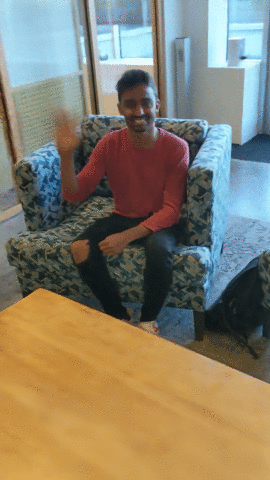Hi,
this looks like the scene has become fully static. The losses require some fiddling for each scene, which just means that you train it a number of times with different weights and then try to tweak them until you hit the best performance. I'm working on a slightly improved version that should be a bit easier to train, but I'll put that up in a couple of weeks probably. For now, you can try to lower all the three weights by, say, a factor of 10. The background should become unstable eventually (you'll know what I mean once it happens) and that hand should become better. It could be that the motion of the hand is too fast, especially since the input images seem like they have some motion blur.
If that doesn't work, try to turn all three of them off, the reconstruction should be okay, but novel view synthesis will be bad. Additionally, the hand might be too thin and you might need to increase N_samples and N_importance to, say, 256 and 128, respectively. Note that that will slow down training quite a bit, maybe four times. If all of that fails, the fingers in the input might move too detailed for the method. But first just try to lessen the regularizers.
Hope that helps, Edgar
Hi, I have been testing NR NERF on the ayush sequence from the CVD method. I have followed the instruction to get the poses using colmap. Then i modified the config to train this sequence as follows:
After training, I get this results: I use
I use
factor = 4to reduce the training time. I think the background is nice but the waving hands are blurry. I read your paper and it seems like we need to carefully tune the weights of 3 losses ? My question is how to tune those numbers and get plausible results ?